A new way to get wet (well, actually, not wet!)
In the world of amphibious boats, there’s often a compromise between seaworthiness and convenience. But New Zealand marine company Tectrax has never aimed to build the boat — they’ve focused entirely on the wheel technology that gets you in and out of the water. What’s resulted is an electric amphibious system so clean and seamless, you’ll forget you’re on a boat with wheels at all — until you drive up a beach.
We spent a day test-driving the latest generation Tectrax system on board a FlyFin 700 HTA boat, a versatile plate boat built in Papamoa by Fenton Marine. It’s the smallest vessel they fit the system to, but don’t let its compact footprint fool you. The ride was smooth, the control interface intuitive, and the transition from land to water — and back again — almost comically easy.
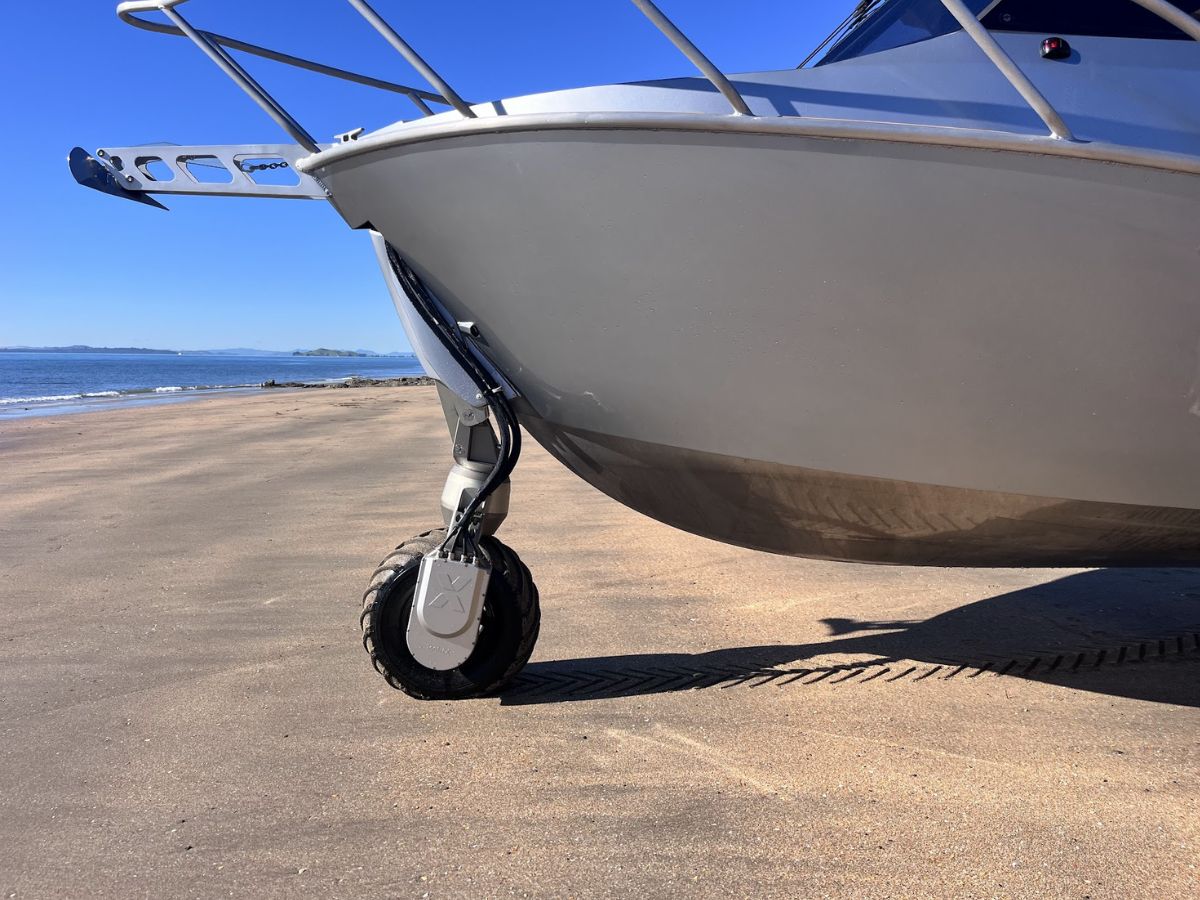
“We’re not trying to be a best-in-breed boat with wheels,” explained Greg Macdonald, Tectrax Project Manager “we’re a best-in-suite technology platform — the wheel system can go on anything.” And now, thanks to a clever new idea, that ‘anything’ includes any boat at all.
Meet the Boat Launcher
The latest innovation from Tectrax is a game-changer: an autonomous, remote-controlled amphibious trailer called the Boat Launcher.
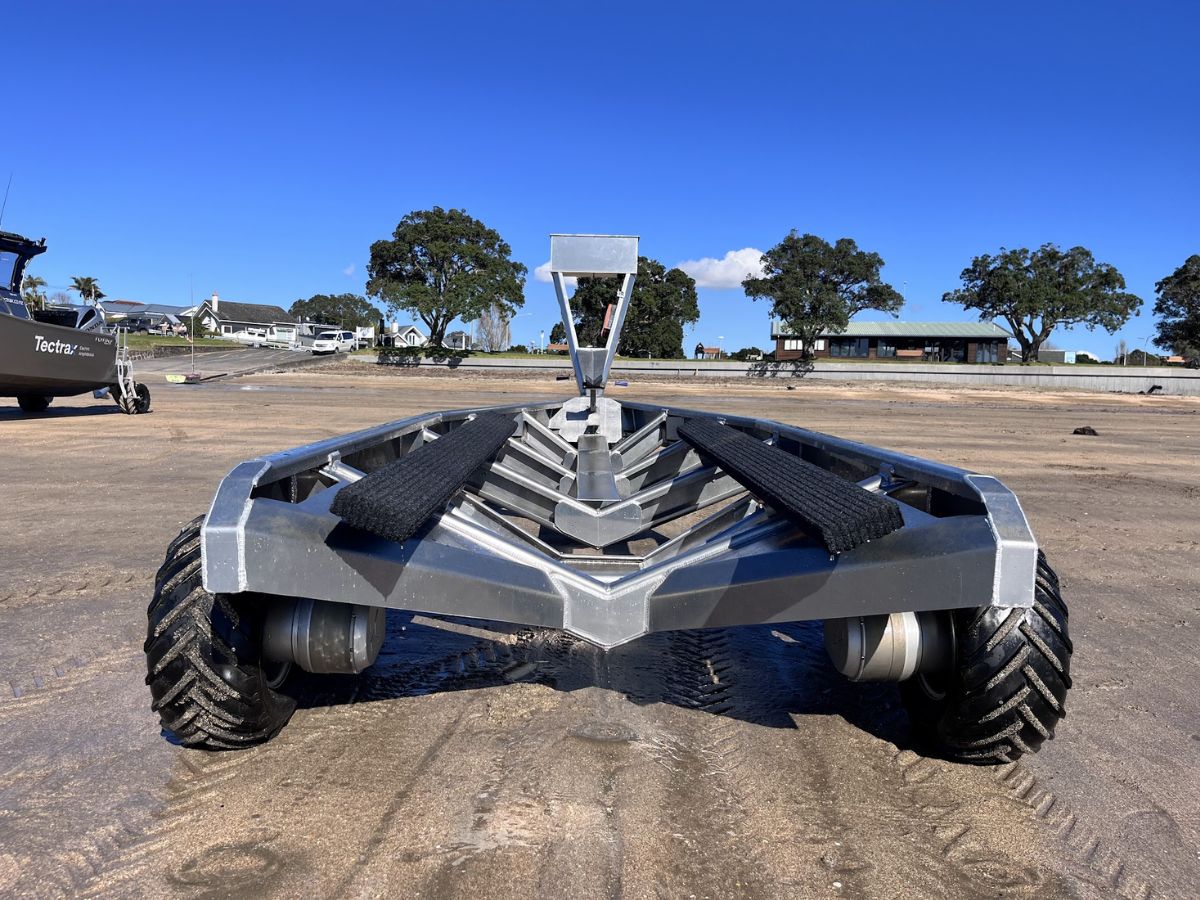
Picture this. You’re launching your trailer boat—no amphibious wheels, just the usual setup. First, you back the vehicle and trailer carefully down the ramp or onto the beach, making sure not to go too deep, get stuck in soft sand, or wedge yourself into loose gravel. Then it’s out of the driver’s seat, down to the water’s edge, and time to slide the boat off.
You’ll wade it out far enough to anchor or tie off, probably getting wet up to your knees—or higher—before making the soggy trudge back to your vehicle. Then it’s a climb back into the car, a short drive to find parking, and a walk back down to your waiting boat. And when the day’s done, it’s the same dance all over again—only this time you’re tired, sunburnt, and possibly racing the tide.
Now imagine this instead. You steer your boat toward the waiting amphibious trailer—one that you control from onboard. Meet the Tectrax Boat Launcher. This clever piece of kit is a self-drive trailer system that you navigate from the helm. Once you’re lined up, you drive it out from its parking spot, across the beach, and into the water. When you’re ready, you simply motor your boat onto the submerged trailer, hit a button, and drive ashore. No wet feet. No bogged vehicles. Just a smooth return to dry land.
The brilliance of the system lies in its simplicity. It gives boat owners all the land-side advantages of an amphibious boat — beach launching, freedom from ramps, independent mobility — without having to modify their vessel. And unlike amphibious boats, which may be limited in design due to wheel integration, this lets owners select the exact hull and configuration they want for use on the water.
The Boat Launcher is driven by Tectrax’s existing wheel technology, with electric motors powering each leg. The drive and steering systems are fully electric, with no hydraulic lines or oil to service. It’s smart, too. With GPS, onboard sensors, and an owner-operated remote, you can drive and park the trailer from a distance. Whether it’s waiting on the beach or retrieved from up to 500 metres away, you stay dry and in control—no need to wade into the surf.
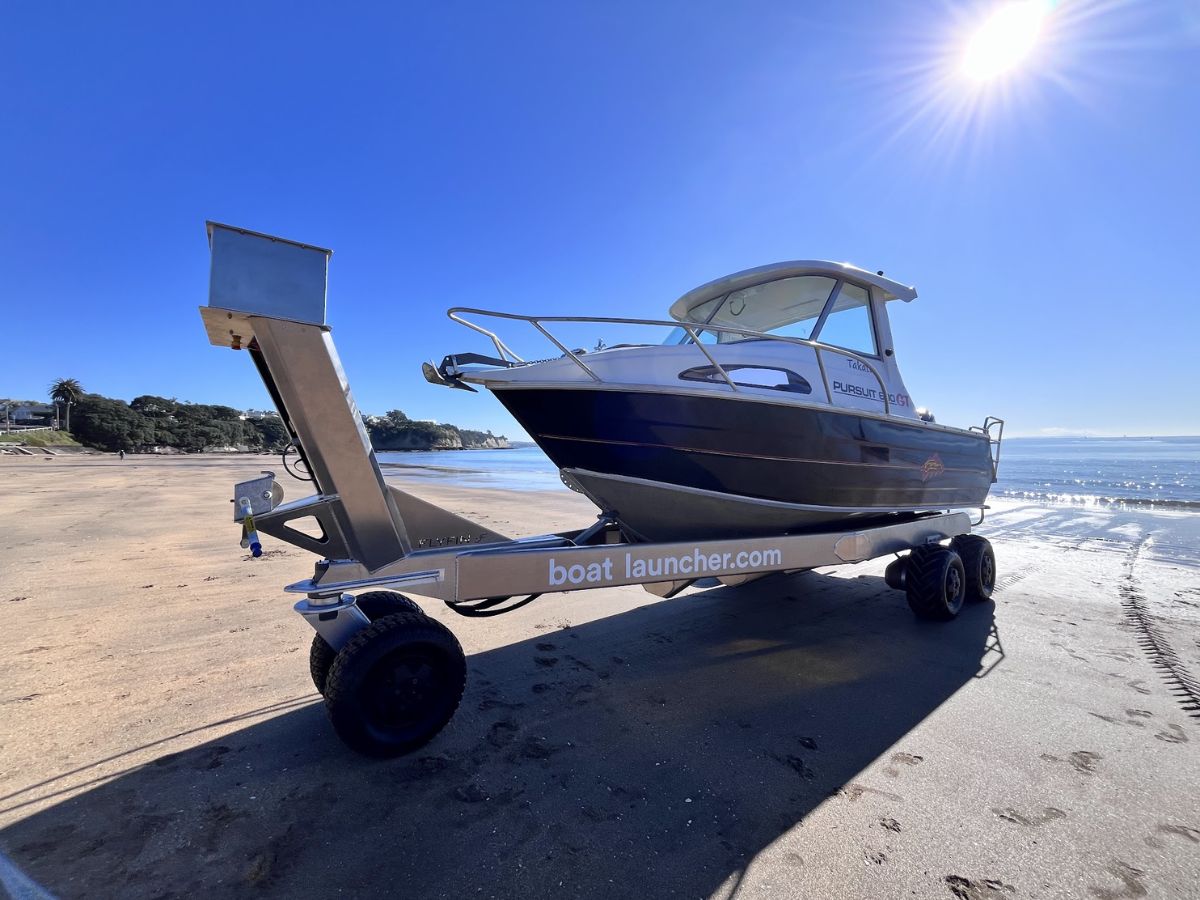
Built for real-world boating
During the Boat Launcher demo, we tested it at Narrow Neck Beach, where it glided into the water under remote control, supported the incoming boat, then calmly rolled back onto dry land — parking neatly beside another rig. It’s one of those marine technology solutions you see in action and immediately wonder why no one has done it sooner.
The boat we used was an older-style Fyran as one of Tectrax’s demo vessels. Flyfin boats are plate alloy built rugged, well-balanced, and to high standards by Nick Fenton’s team at FlyFin Boats (under the umbrella of Fenton Marine) in Papamoa. FlyFin also builds the chassis for the Boat Launcher itself. As with the boats, the welds are clean, the components sturdy, and the whole system feels over-engineered in the best possible way.
This isn’t just about convenience. Tectrax knows its market includes older boaters, beachfront property owners, and those with mobility needs. Many are long-time seafarers looking for a better way to stay active without the hassle of trailers, ramps, or marina costs. The system offers them independence — and, as one customer told the team, “another 15 years of boating.”
Engineered from the ground up
Tectrax’s latest generation system — referred to as Gen 2 — was a complete clean-sheet redesign. Gone are the hydraulic pumps, lines, and steering arms. Instead, each wheel is powered by an electric motor with high-torque gearing, offering faster deployment, tighter turning, and less maintenance. The legs lock into place firmly — no sagging, no leaks, and no need for cradles when storing ashore.
A small control screen and joystick handle all the action. At a glance, you can monitor battery charge, deploy or stow wheels, or manually adjust leg height for levelling or overnight beaching. Cruise control and auto-launch functions are in development — both set to roll out soon.
Under the seats, the system runs on a bank of three lithium batteries (with a fourth optional). It can be charged from shore power, solar panels, or even the outboard alternator. During our multi-hour trip, the system used just four percent of battery — and that included a beach exit and trailer demo.
Designed, built, and supported in New Zealand
The entire system is developed and supported in New Zealand, with the majority of engineering and programming done in-house. Tectrax works closely with ZeroJet on electric motor and battery integration, combining the amphibious know-how of one with the electric propulsion expertise of the other.
And while some competitors have gone the “electric-over-hydraulic” route — swapping out combustion motors for electric pumps — Tectrax’s solution is fully electric from the outset. No oil, no fumes, no warm-up, and very little noise.
The FlyFin 700 HTA’s Honda 250 outboard may have provided the thrust for our offshore runs, but on land, the Tectrax system handled itself with quiet, confident power.
Production coming very soon
Production of the Boat Launcher begins in September, with early units already committed to interested buyers from the Hutchwilco Boat Show. Multiple versions are in the works, including heavy-duty variants with tracks rather than wheels for steeper or softer terrain. But the core idea remains unchanged: amphibious freedom for any boat, with none of the compromises.
Tectrax may not be in the business of building boats — but they’ve just built one of the smartest ways to move them.








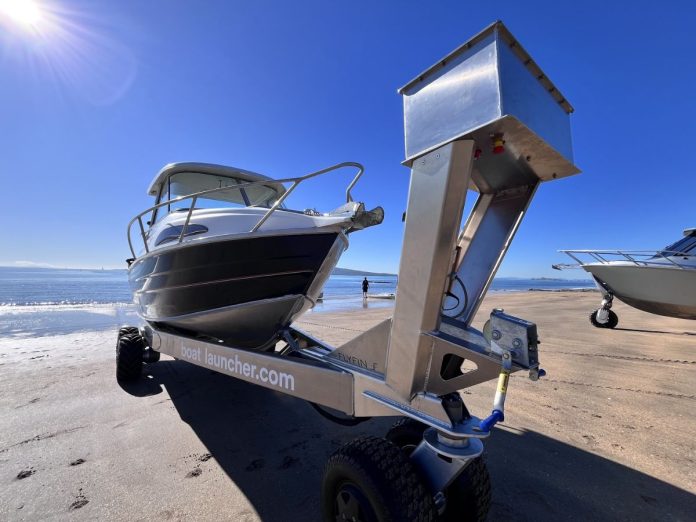


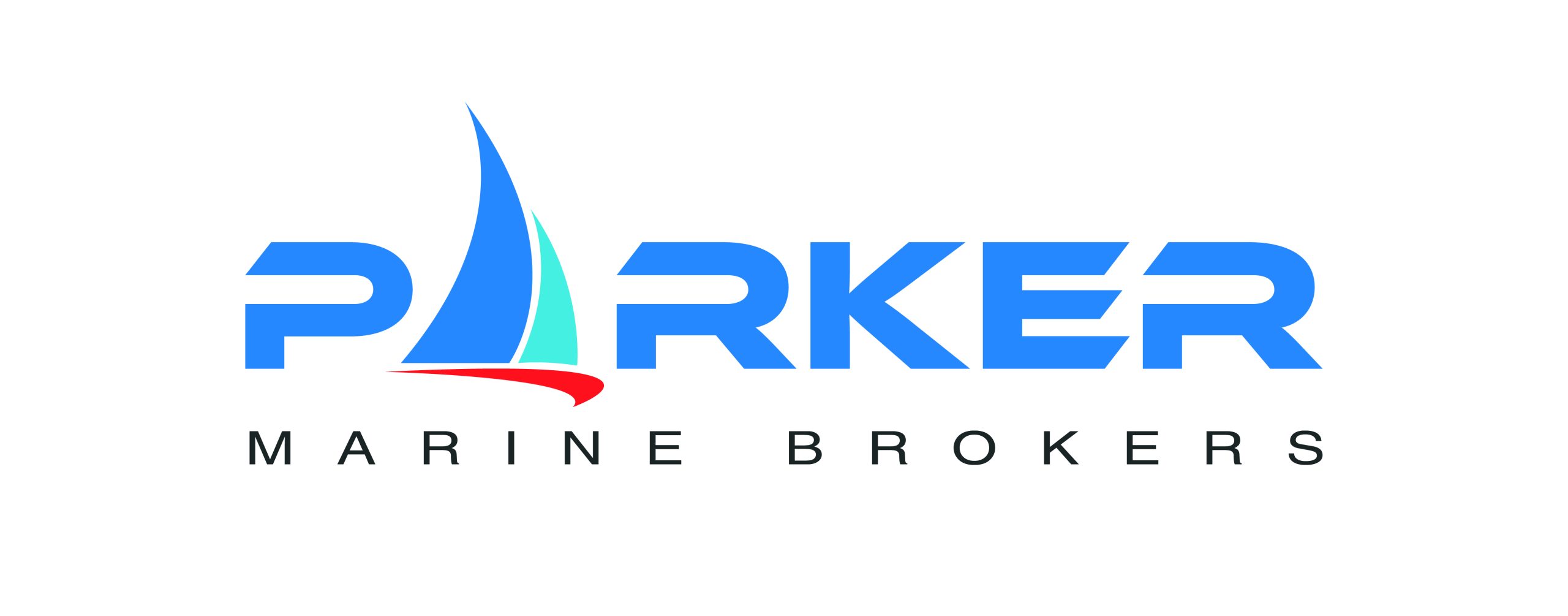
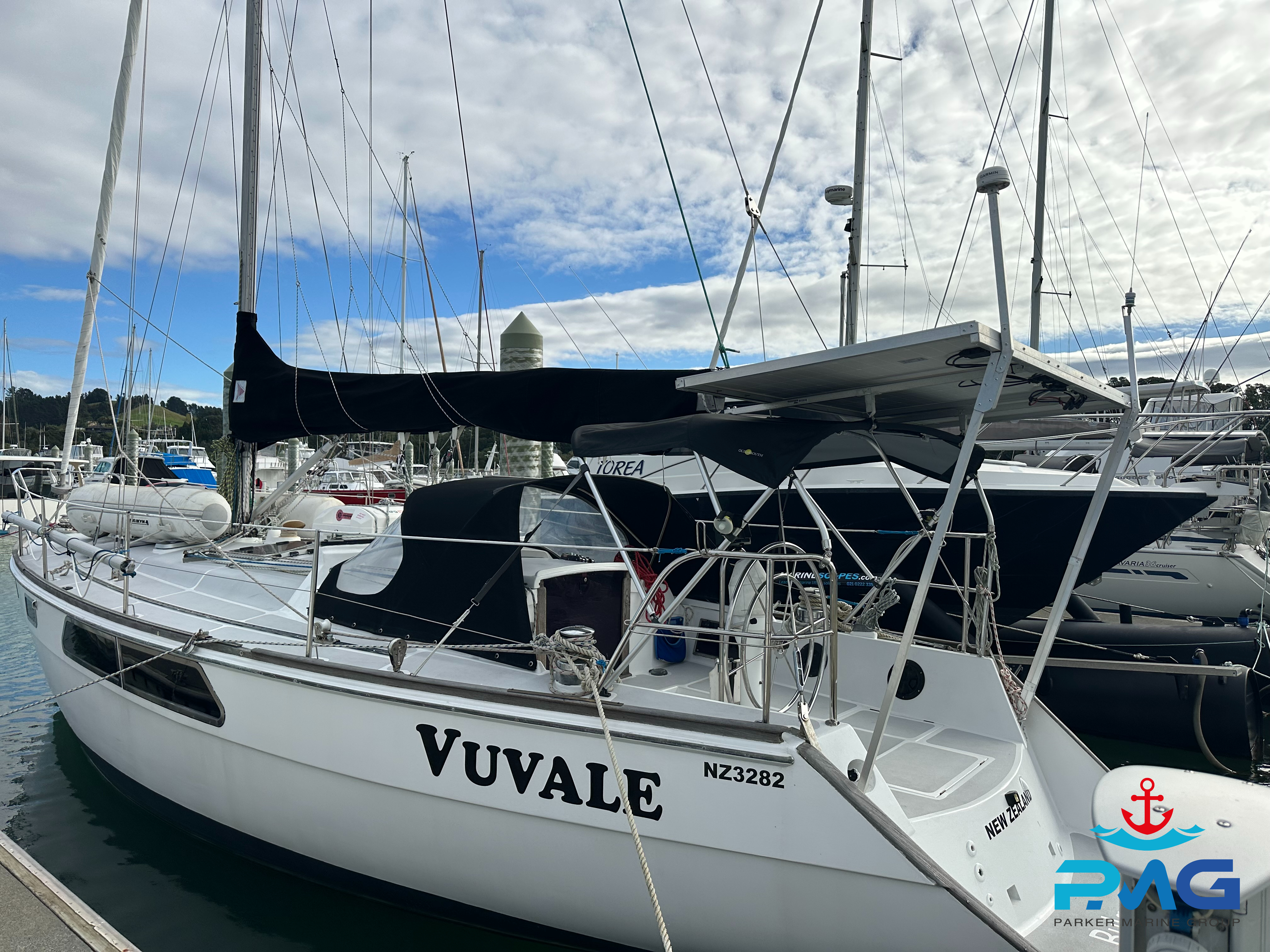
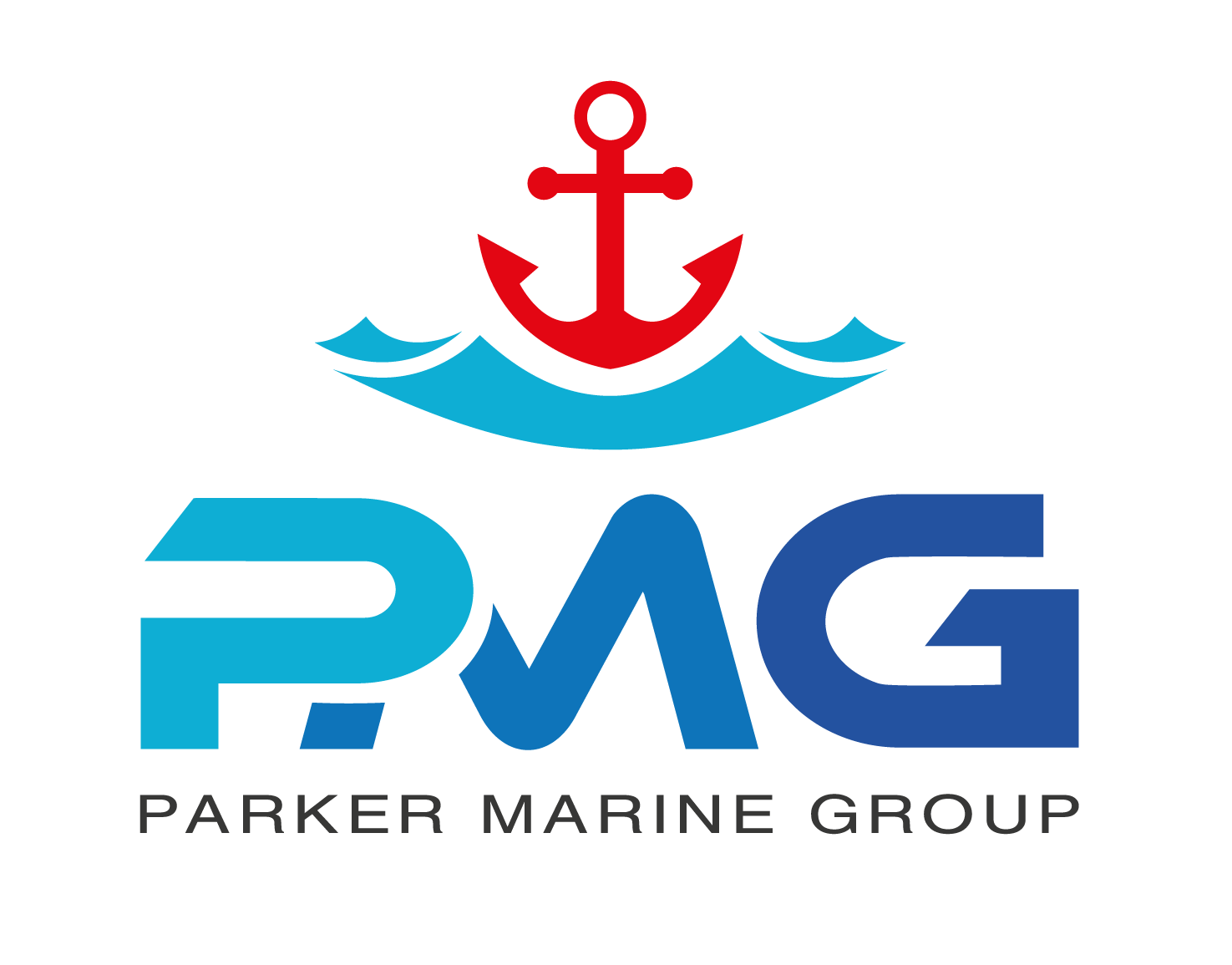

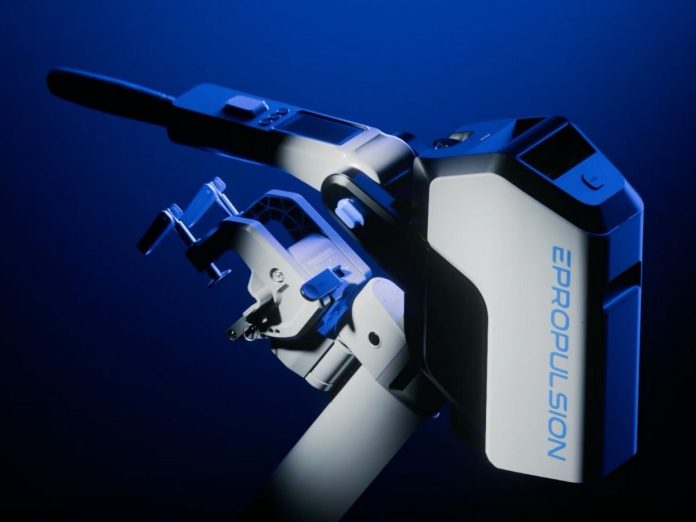
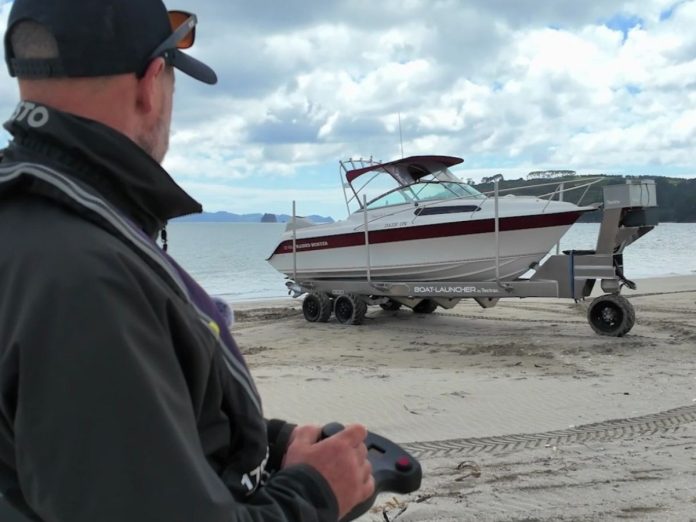
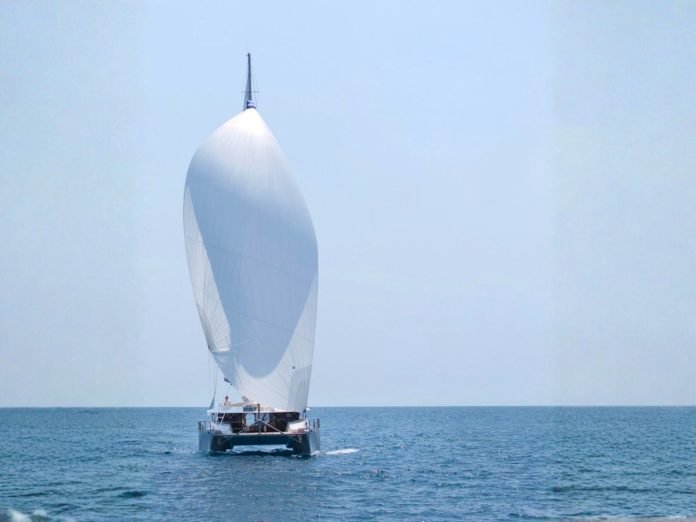
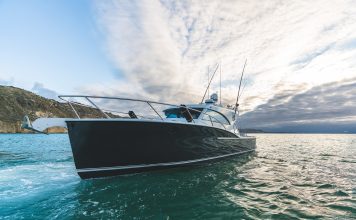

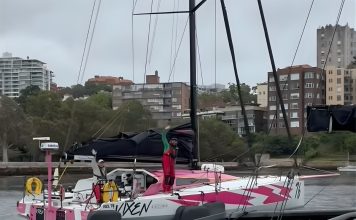
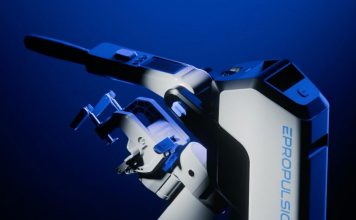
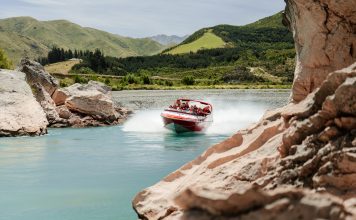
EVERYONE who reads this article is wondering about the price. Yet no mention of it.
Could it be designed to be towable so once the boats on and back on land you can tow it home, perhaps even charging the lithium batteries as it’s towed?